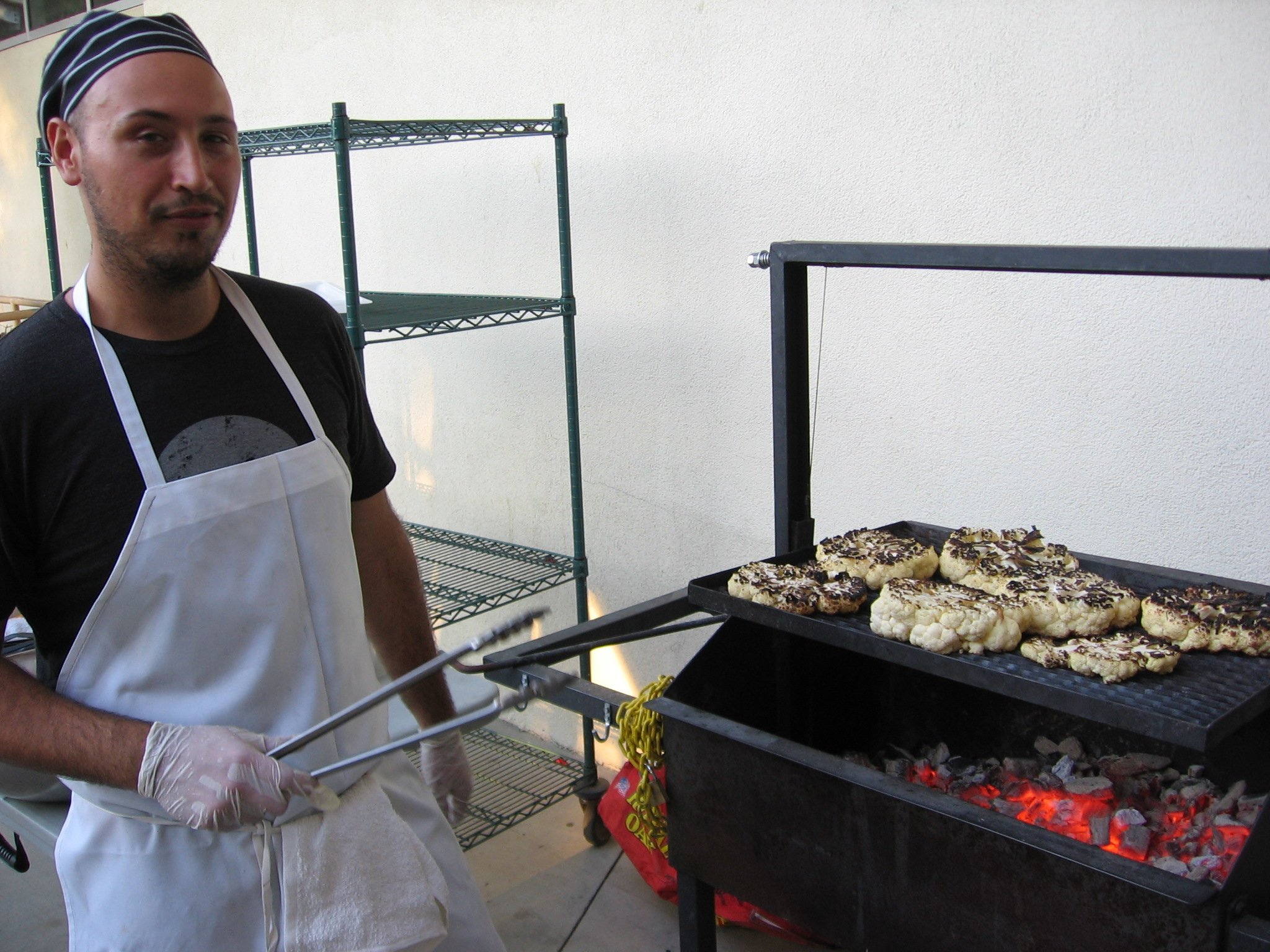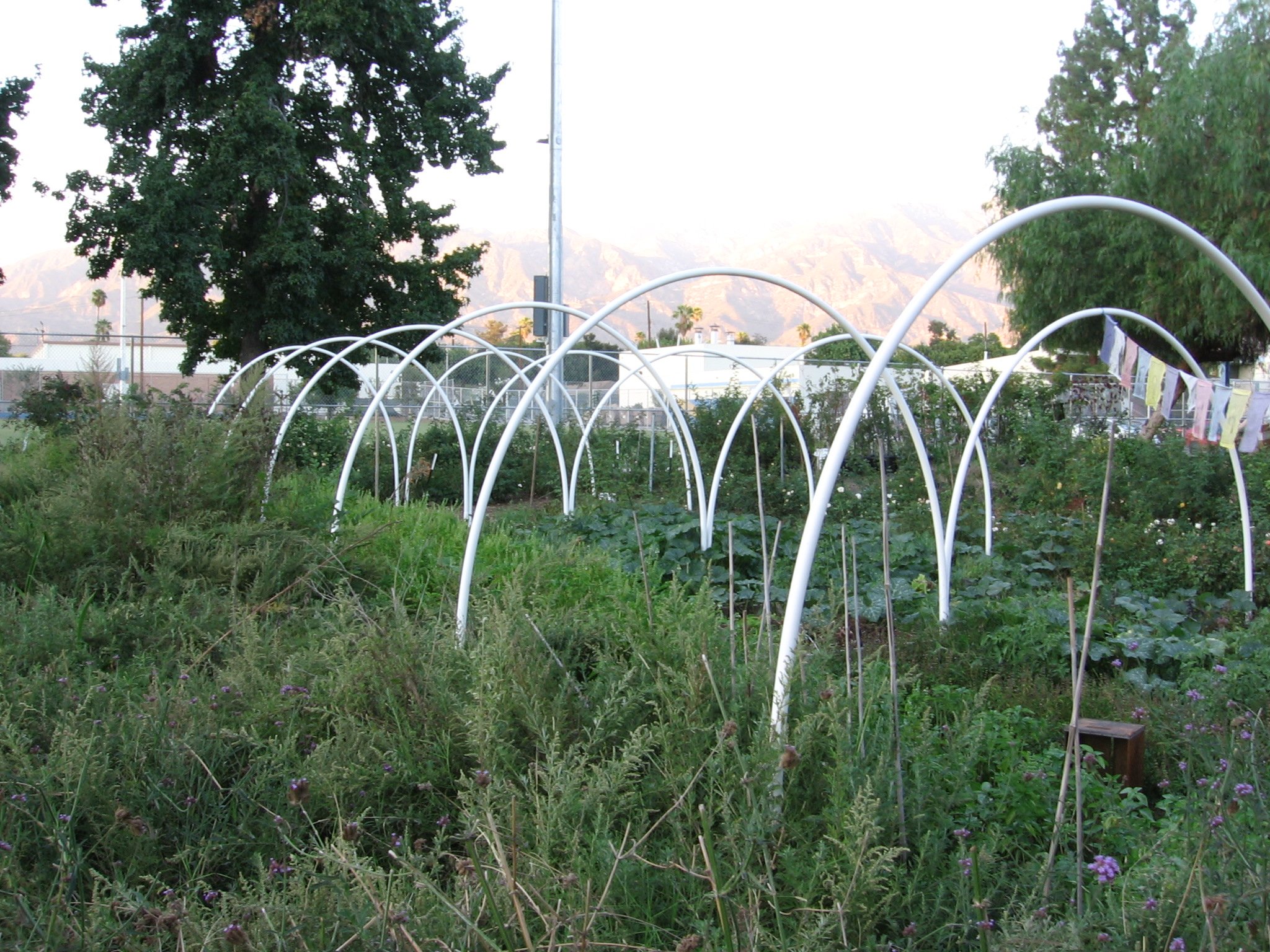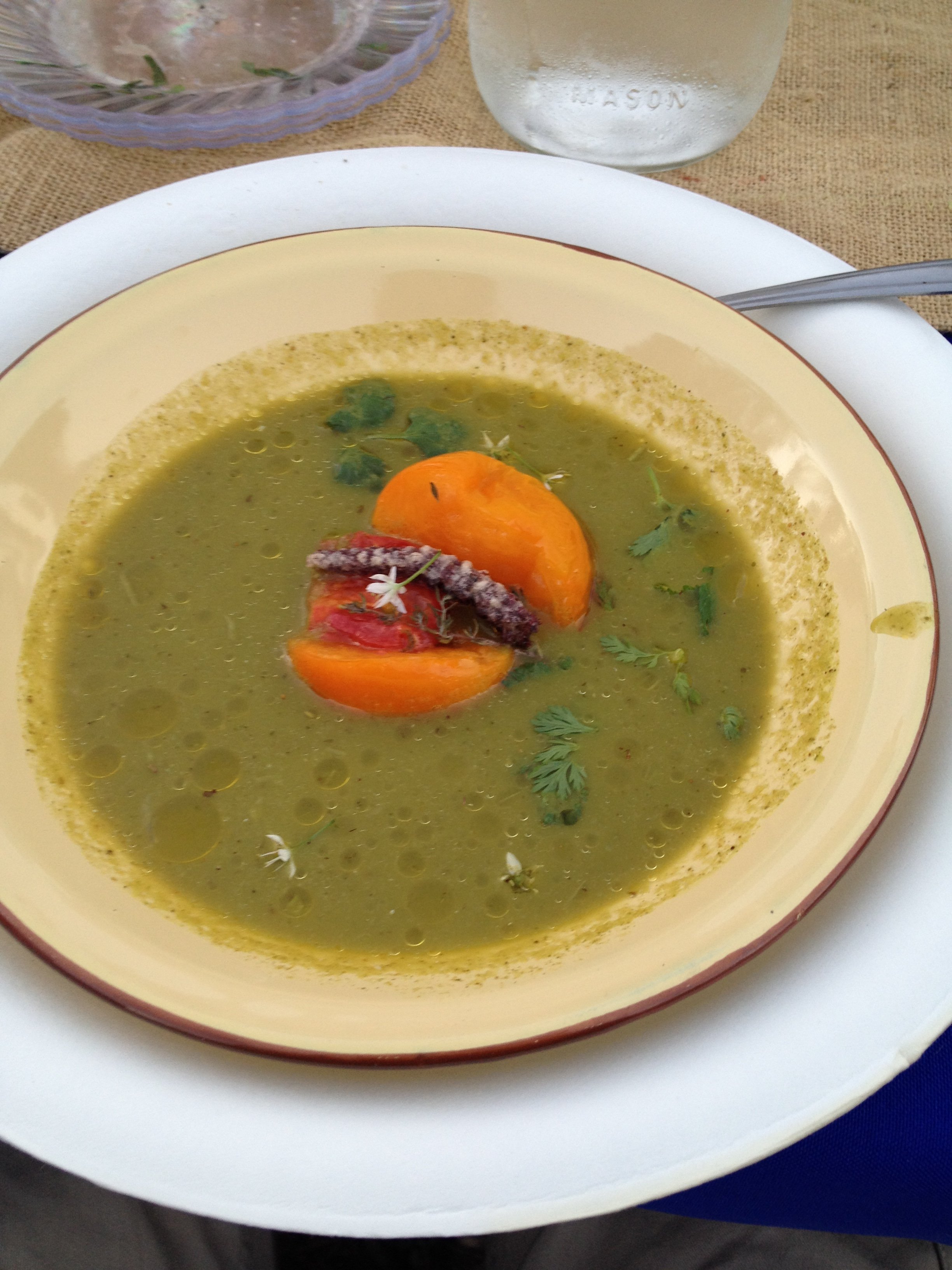By Steven Biggs
Cauliflower Steak?
As the chef addressed our group of garden writers, he told us that he’d used a Korean-style marinade on the cauliflower steaks.
Cauliflower steaks? Yup. And not cauliflower crumbs glued together with insipid, sticky filler.
I walked over to the grill to have a peek. There were big, sizzling, round slabs of cauliflower, sliced so the central stem held everything together.
High-School Farm-to-Table Meal
We were at Muir Ranch, an urban teaching farm and teen-jobs program on a 3-acre field behind John Muir High School in Pasadena, California.
They’d set up a long table beside the field to feed us. Students were ferrying around food.
Feeding a Diverse Crowd
That farm-to-table meal was in 2015, and I hadn’t had cauliflower steak since.
Cauliflower steak is a fun way to use locally-grown cauliflower when it’s in season. Here are some Ontario-grown beauties.
But recently I had an entertaining dilemma.
I was feeding a group of friends with diverse diets. I needed an entree that was:
Vegetarian
Low-carb
Gluten-free
Keto-friendly
Farewell soy sauce…see you, sugar…bye-bye bread crumbs!
So I went hunting for my photo of the cauliflower steaks, to see if I could remember how it was done.
I set out to recreate the cauliflower steaks I’d enjoyed at a very fun farm-to-table meal.
A Perfect Fall Meal
A cauliflower steak is a great dish for feeding friends on diverse diet regimes. (Unless you’re ardently anti-vegetable, like my late Uncle Bill.)
This is also a great recipe if you’re looking for new ways to serve up locally-grown produce. For long stretches of the year here in Southern Ontario, grocers stock puny shrink-wrapped cauliflower shipped in from across the continent.
But it’s November as I write this, and there are fantastic Ontario-grown cauliflower. Large and snow-white.
Add in Yuzu
Some of my harvest of Toronto-grown yuzu fruit
I had one other thought in mind as I planned dinner: Feed my guests some of the yuzu fruit I’ve grown.
If yuzu is new to you (excuse the rhyme!), it’s a citrus fruit, and the rind has a floral smell and taste.
For northern gardeners looking for a fun, exotic crop to grow in a pot, yuzu is a cold-tolerant citrus.
Grown in the ground, yuzu can go to about -10°C (14°F). In a pot it can’t get quite as cold…but I stow mine in a cold garage or greenhouse that I keep just above freezing for the winter. (Grow it just like you would a lemon tree in a cold climate. Find out how to grow lemons in cold climates here.)
Cauliflower Steaks is a Hit
The cauliflower steaks were a hit with my guests.
The cauliflower steaks were a hit. If you like the sound of them, my recipe is below.
How to Make Cauliflower Steak
Carve Cauliflower into “Steaks”
I cut 2 steaks from each cauliflower head. Cut it from bottom to top, along the centre of the stem so that the outlying sections are held in place. After you’ve halved it, make a second cut to shave off the rounded side, leaving you with a flat steak.
(The rounded part that you shaved off will include lots of small bits. I set them aside to make a cream of cauliflower soup later in the week.)
Make a Marinade
Because the chef who made those steaks at Muir Ranch mentioned a Korean marinade, I thought I’d combine ingredients for a Korean-inspired marinade, and then add in my yuzu fruit. I made a fairly big batch – enough for the 3 heads of cauliflower. You might not need this much if you’re doing just one head of cauliflower.
Cut cauliflower from bottom to top, along the centre of the stem so that the outlying sections are held in place.
4 large cloves of garlic (hardneck ‘Red Russian’ garlic from my garden)
Grated ginger root, about 2” of it (I use a microplane, but a fine grater is OK too)
5 tbsp. tamari sauce (soy works well too…but I used gluten-free tamari for my gluten-free guest)
3 tbsp. rice vinegar
6 tbsp. sesame oil
5 tbsp. of a brown-sugar like zero-calorie sugar replacement (OK, I’ll be honest here – just use brown sugar unless you’re on a special diet.)
1 tbsp. sambal oelek hot pepper sauce (I’ve seen a lot of Korean recipes calling for gochujang hot sauce…but we keep sambal oelek in our kitchen…and you can use whatever hot sauce suits your taste)
Zest and juice of 2 yuzu fruit
I spread the marinade on the cauliflower steaks a couple of hours ahead of cooking them. Put it on both sizes, and around the outer edge.
Grilling the Cauliflower Steak
I flipped the steaks part way through, and used a fork to test the softness.
I decided to go for high heat, with the lid of the BBQ down. That’s because I like cauliflower when slightly charred or browned, which gives it a slightly nutty flavour.
I flipped the steaks part way through, and used a fork to test the softness. I like cauliflower on the firm side.
Serving Cauliflower Steak
These were whopping big steaks…nearly as big as our dinner plates, and probably more cauliflower than even the most ardent health-food nut eats in a week.
So I sliced the steaks in half, down the middle, before putting them on a serving platter.
And one other thought: Put steak knives out with your table setting. The main rib can be hard to cut if your cauliflower is on the firm side.
Cauliflower Steak FAQ
What if I don’t have a sugar substitute?
Unless you’re on a special diet, just use brown sugar. That’s what I usually use in my Korean-style marinades.
Can I use purple cauliflower?
I’ve never tried that, but I think it’s an awesome idea. Try the yellow cauliflower too.
Can I cook cauliflower steak in the oven?
Why not? I love to dry-cook cauliflower in the oven at a high temperature so that it browns and develops a nutty flavour. Just do the same thing with a steak. Put it on a baking sheet, at a high temperature, around 425°F (220°C)
More Ideas
Here are more cooking ideas, and more information on growing your yuzu in a cold climate. Grow a potted yuzu tree the same way you would a lemon tree.












